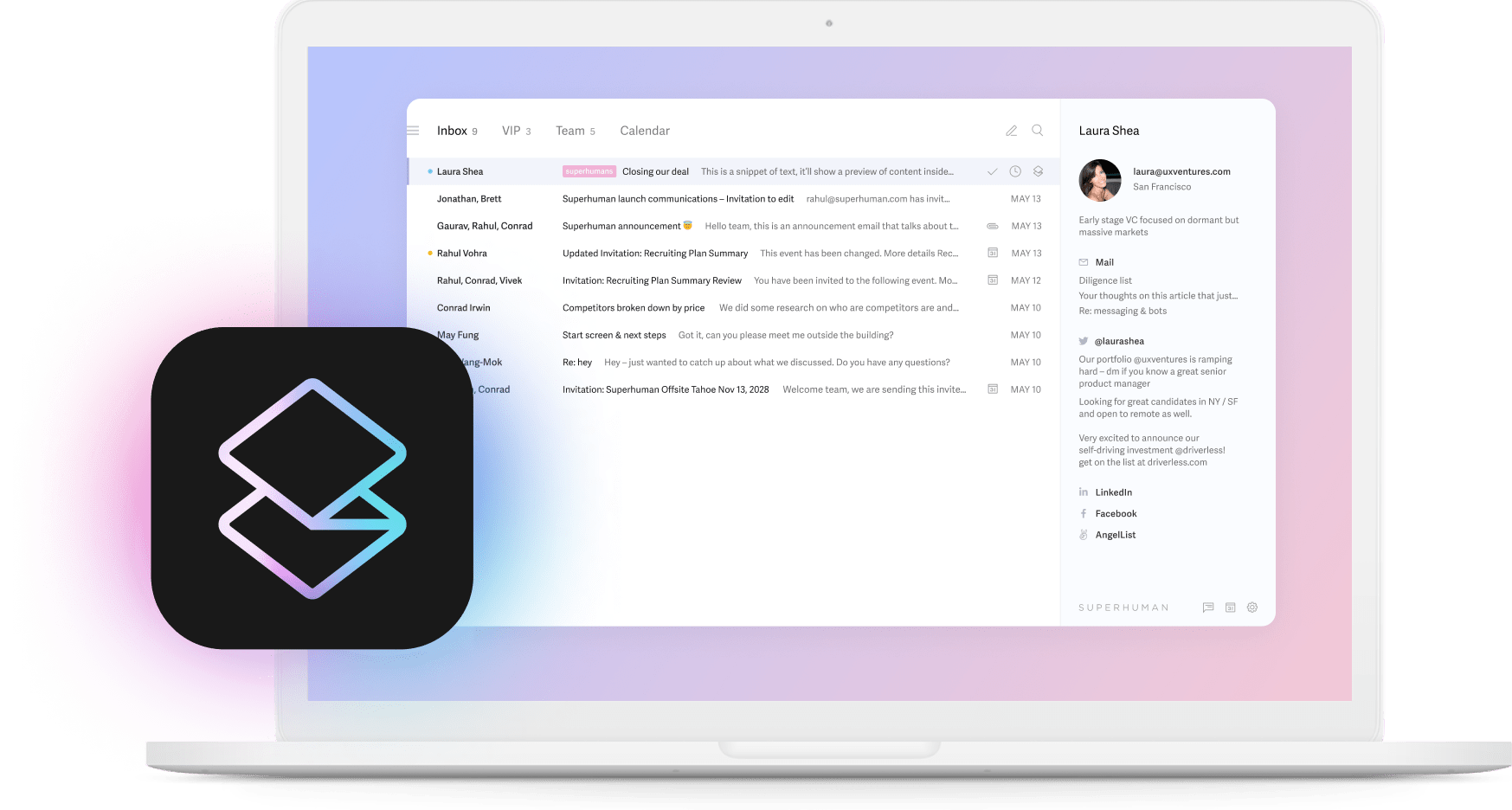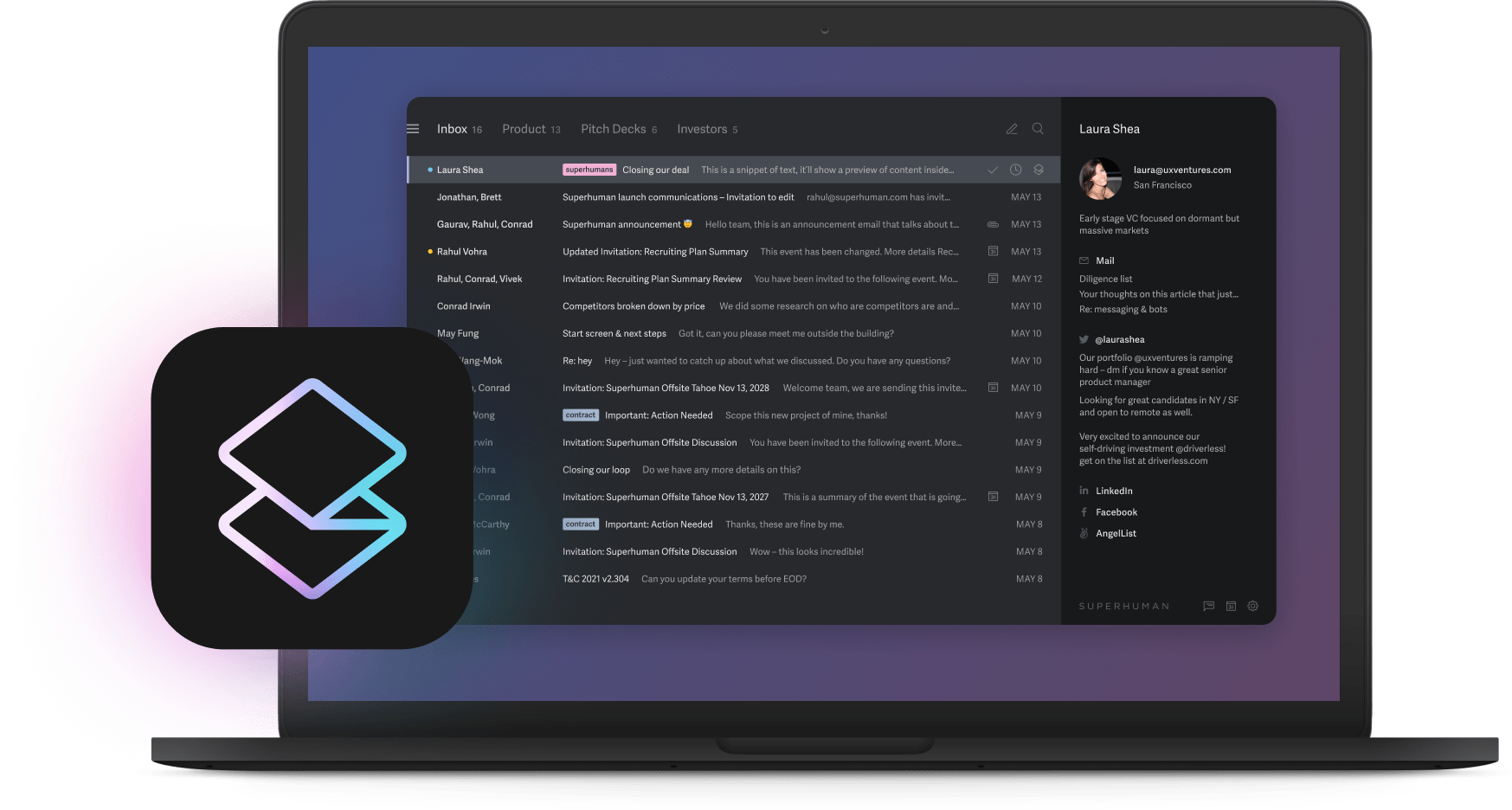
You're three meetings deep when you check your inbox. Forty-seven unread emails. A client wants an update. Your boss needs clarification on yesterday's deliverable. Someone from last quarter's conference is asking if you're free for coffee. Each one needs a thoughtful response, and you've got twenty minutes before your next call.
More than 361 million emails are sent every day, and professionals spend roughly 28% of their workweek managing email. That equals about 11 hours. AI email responders can change this by analyzing incoming messages, understanding intent, and generating contextually appropriate responses that sound like you. Using AI in email transforms how teams process information and make decisions.
What is an AI email responder?
An AI email responder uses artificial intelligence to analyze, streamline, and automate your email responses through natural language processing and machine learning. These systems understand email content, determine sender intent, and generate replies that maintain your communication style.
Think of it like having Grammarly check your writing, but instead of just catching errors, the system drafts complete responses. The growing need for this stems from the sheer volume of digital communication.
Workers experience hundreds of interruptions per day from meetings, emails, and chat notifications. Each interruption requires an average of 23 minutes to regain focus. This is why email productivity apps have become essential tools for professionals managing high email volumes.
Modern AI email responders evolved from simple rule-based auto-responders. Traditional systems could only send predetermined messages based on basic triggers. AI-native responders employ natural language processing to analyze email sentiment, extract key information, understand complex requests, and generate responses that feel authentically human. These systems learn from your communication patterns and adapt to your tone.
How does an AI email responder work?
An AI email responder operates through a multi-step process that transforms incoming email content into intelligent responses.
Analyzing incoming emails
The system processes raw email content through natural language processing algorithms that break down the text into analyzable components. This includes identifying intent, assessing tone and urgency, and extracting questions, deadlines, and action items. Advanced systems recognize subtle linguistic cues, understand context from previous email threads, and identify implicit needs that may not be explicitly stated.
Considering context and preferences
The AI system references your communication history, preferred tone, and organizational guidelines to ensure responses align with your authentic voice.This analyzes your past emails to learn your typical greeting and response style. It also detects your formality with different contacts and your preferred closing phrases. The system also considers relationship context—whether you're communicating with a colleague, customer, or executive—and adjusts tone and detail accordingly.
Generating draft responses
The system generates complete draft responses that address the sender's specific concerns while maintaining your communication style. Advanced language models power this process, creating original content tailored to the specific situation.
The system incorporates relevant information from your knowledge base, previous conversations, and organizational policies where appropriate.
Creating drafts for review
The system presents polished draft responses that you can review, edit, and send with minimal effort. Advanced AI email responders provide confidence scores indicating how certain the system is about each response's appropriateness. This lets you identify which drafts can be sent immediately and which might benefit from human review.
Underlying technologies of AI email responders
Two core technologies power AI email responders: natural language processing and machine learning. These work together to understand your messages, learn your communication style, and generate responses that sound authentically like you.
Natural language processing
NLP enables AI algorithms to recognize linguistic patterns and extract meaning from unstructured email text. These systems grasp semantic links and pick up sentiment and tone. They further identify people, companies, and other entities while interpreting complex sentence structures. This lets AI email responders distinguish between emails that contain similar words but fundamentally different meanings.
For example, recognizing that "Great news about the project" conveys entirely different intent than "It would be great if you'd finally address the project issues."
Machine learning
Machine learning algorithms continuously learn from your behavior and language patterns to improve response quality. These systems analyze successful email interactions to understand which response styles generate positive outcomes.
They learn from your edits to improve future suggestions and adapt to evolving communication preferences. As the system processes more of your emails, it becomes increasingly sophisticated at matching your authentic communication voice.
Key features and benefits of AI email responders
Implementing an AI email responder delivers measurable improvements across email management and professional productivity.
Time savings through automated drafting
AI email systems can reduce email composition time significantly. For professionals sending 25-30 emails daily, this translates to reclaiming several hours per week. You can redirect that time to strategic work, client relationship building, or creative problem-solving.
Teams utilizing AI email assistance report being able to process twice as many communications in the same timeframe while maintaining response quality. When combined with other AI productivity tools, the time savings compound across your entire workflow.
Faster response times
Organizations implementing AI email responders achieve response times that are typically 12 hours faster than traditional email workflows. This acceleration proves particularly critical in customer service contexts, where most customers expect responses within one hour. Sales teams benefit even more dramatically—responses delivered within five minutes are significantly more likely to qualify leads compared to responses delivered after hours or days.
Consistency in brand voice
AI email responders maintain consistent communication standards across your organization. Every team member, regardless of experience level, can deliver professional, on-brand responses.
The system learns your organization's preferred communication style and ensures all outgoing messages align with your professional standards. This proves particularly valuable for customer-facing teams where communication quality directly impacts brand perception.
Reduction in response errors
Manual email composition introduces opportunities for errors—typos, factual inaccuracies, tone mismatches, or incomplete information. AI email responders reduce these errors by generating responses based on verified information and established communication patterns.
The system can cross-reference internal documentation, previous correspondence, and organizational policies to ensure accuracy. This quality control happens automatically before you even review the draft. AI email filters work behind the scenes to prioritize what matters and reduce manual sorting time.
How Superhuman Mail uses AI to respond to emails
Superhuman Mail approaches AI email response differently than basic auto-suggest features. The platform combines multiple AI-native capabilities that work together to transform how you handle email. While tools like Grammarly help polish your writing and Coda organizes your workflows, Superhuman Mail focuses on making email itself faster and more effective.
Ask AI
Ask AI enables rapid answers without having to remember senders, guess keywords, or manually search through messages. The system understands natural language queries like "Where was the conversation left off with the Johnson account?" or "When did I last speak with Sarah about the budget proposal?" Ask AI provides immediate, contextually relevant results that dramatically accelerate information retrieval.
Instant Reply
Instant Reply represents a breakthrough in AI email automation. Open your inbox to find that every email already has a complete, contextually appropriate draft response ready for review and sending. Unlike Gmail's basic suggestion features, Instant Reply generates full email responses. The system learns from your communication history to ensure responses maintain your authentic voice and professional tone.
Superhuman AI
Superhuman AI transforms short phrases or bullet points into complete, professional emails while maintaining your personal tone.The system studies how you typically write. It then creates replies that mirror your voice accurately. This proves particularly valuable for busy executives and professionals who need to maintain high-quality communication while managing extensive email volumes.
Team collaboration
Superhuman Mail includes sophisticated collaboration capabilities such as Read Statuses, which show exactly when and on what device emails were read. This enables teams to follow up with greater accuracy.
Shared Conversations allow teams to collaborate on email responses without the confusion of multiple team members responding to the same message simultaneously. Team Comments enable internal discussion directly within email threads, eliminating the need to switch between communication platforms.
Comparison with other AI email solutions
The intelligent email assistant market has grown rapidly, with different tools offering varying levels of sophistication and integration.
Gmail with Gemini integration
Gmail offers AI assistance for Google Workspace customers, including email thread summarization, suggested reply generation, and composition assistance. The system integrates natively with Google's ecosystem. Gemini provides basic auto-responses and can summarize email threads. The AI suggestions use Google's language models and work within the Gmail interface.
Microsoft Copilot for Outlook
Microsoft Copilot provides native integration for Microsoft 365 subscribers. The tool offers conversational AI assistance for email drafting and calendar management. Copilot works within the Outlook interface and connects with other Microsoft 365 applications. The system uses Microsoft's language models to generate email suggestions and drafts.
Standalone AI email tools
Browser extensions and dedicated applications provide AI assistance across multiple email platforms. These tools typically work as add-ons to existing email clients rather than being built into the email platform itself. Integration depth and feature sets vary depending on the specific tool and email platform combination. For a comprehensive comparison of available options, see our guide to the best AI email assistants.
Practical benefits for different roles
Different professionals gain distinct advantages from AI email responders:
Sales professionals benefit from Superhuman Mail's ability to identify high-priority prospects, generate personalized outreach sequences, and maintain consistent follow-up communication.
The combination of Ask AI for rapid customer research and Instant Reply for immediate response capability enables sales teams to dramatically improve response times and conversion rates.
Customer service teams handle routine inquiries autonomously while escalating complex issues appropriately. The system's ability to maintain consistent brand voice across all responses ensures professional communication standards regardless of team size or individual experience levels.
Executives and senior leaders use Superhuman Mail to maintain high-quality communication across extensive contact networks without sacrificing time for strategic work.
The AI's ability to generate contextually appropriate responses for different stakeholder groups enables consistent, professional communication at scale—whether you're communicating with board members or direct reports.
Start using AI email responders today
Organizations implementing AI email systems report significant cost reductions while improving resolution rates and satisfaction scores. Sales teams achieve faster cycles and better conversion rates through quicker responses and more personalized communication.
Start with pilot programs in high-volume email departments. This lets you validate improvements before expanding organization-wide. Track response time improvements, satisfaction scores, and time savings that can redirect to strategic work. For a complete step-by-step approach, see our guide on managing emails with AI.
If you're spending 4-5 hours weekly on email management, you can redirect that time to billable work or business development. The investment typically pays for itself within the first month through reclaimed time alone.
Superhuman Mail transforms email from a daily burden into a competitive advantage. Teams save 4 hours per person every week while dramatically improving communication effectiveness.






